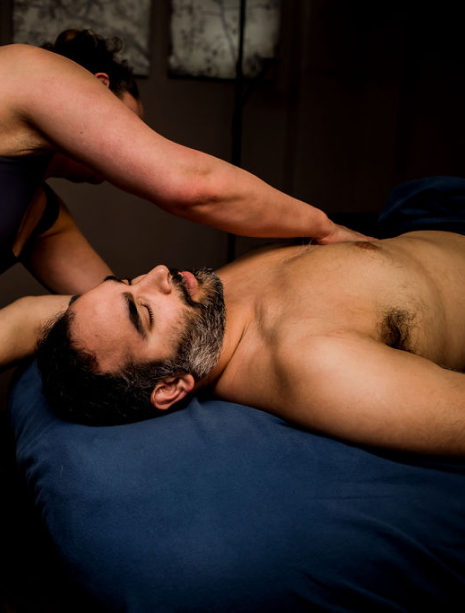Breast/Chest Massage
in Seattle, WA & Surrounding Areas

Breast/Chest Massage Benefits

Neck & Shoulder Relief

Stimulate Lymphatic System

Improved Lactation

Breastfeeding Comfort
Frequently
Asked Questions

The session begins with a thorough health history. This is a critical component to safely providing any health service. Certain conditions (including infection and undiagnosed discharge or lumps) could make a massage dangerous. In addition, some medical conditions, such as heart disease or diabetes, could lead to pain, and should be evaluated by your physician.
Part of this discussion will include your health goals and your preferences for receiving massage with or without clothes, through a sheet or drape, or with direct skin contact. The session is designed to meet your needs and comfort level.
Breasts are an integrated part of the chest and shoulder girdle. They affect the posture and, therefore, tension in the neck, shoulders, upper back and chest. Trigger points, muscle contractures, joint inflammation and nerve impingement can all refer pain to the breasts. Due to this, treatment will begin with the muscles surrounding the breasts. Lymphatic regions in the neck and underarms will be opened to promote drainage.
Afterward, surrounding muscle and tissue will be kneaded to promote circulation. Abdominal massages are frequently included in the session, as well as deep breathing. Gentle myofascial release techniques may be used to reduce adhesions. This can be done with or without lotion. Communication will be open throughout the process to assure your comfort and answer any questions you have. Feedback will be elicited so you and your therapist respect the delicacy of the structures in this region to keep them safe and sound.
Skin contact is the preferred way to perform massages. Visual inspections are an important way to assess changes in breast health, so undraping the breast provides essential treatment information. That being said, a massage can be performed over loose, thin clothing or through a sheet or drape.
Some clients prefer to perform their own breast massage with instruction from the therapist. There are many options, and the priority is always your comfort and safety. It is your decision how you choose to receive treatment and you may change your mind at any point during the session.
A professional breast massage is just one part of breast care. You are the most important promoter of your health! Regular breast self-massage (using your hands or an electric massage device) will improve circulation and help you comfortably monitor alterations in your tissue texture over time. This information aids in informed communication with your doctor if you notice any concerning changes.
Breast self-checks are another way to track these changes. While palpating breasts can seem daunting and complicated, receiving hands-on education from a skilled massage therapist can make the whole process much more fulfilling.
Jack Sherley
Mary Murray
Contact us
For more information about the most trusted massage therapist near you, contact Rachel Porter today!
